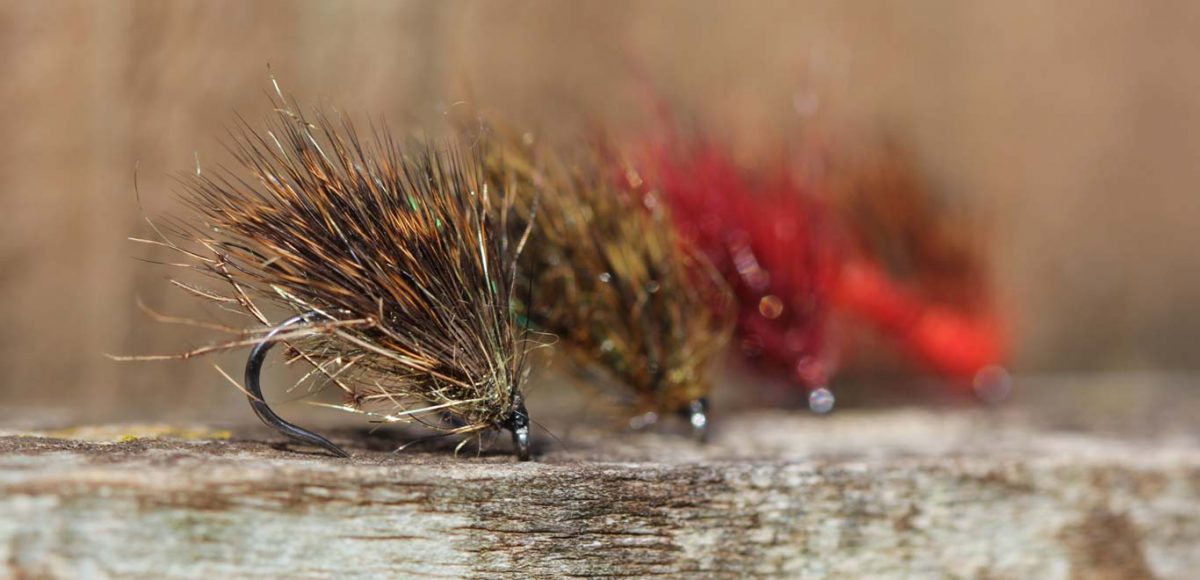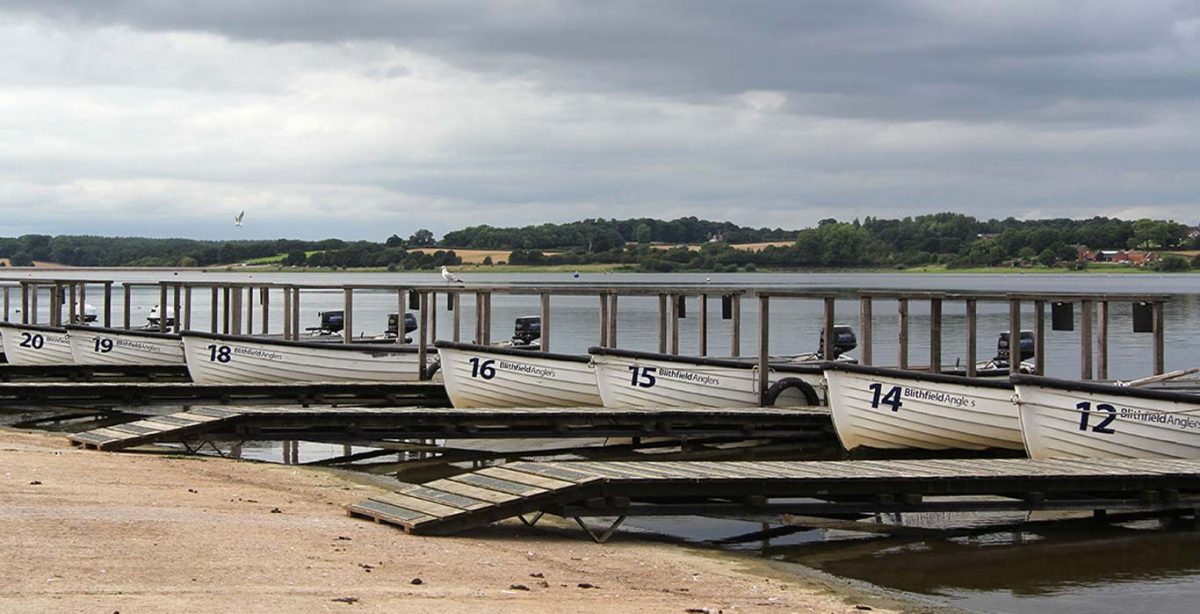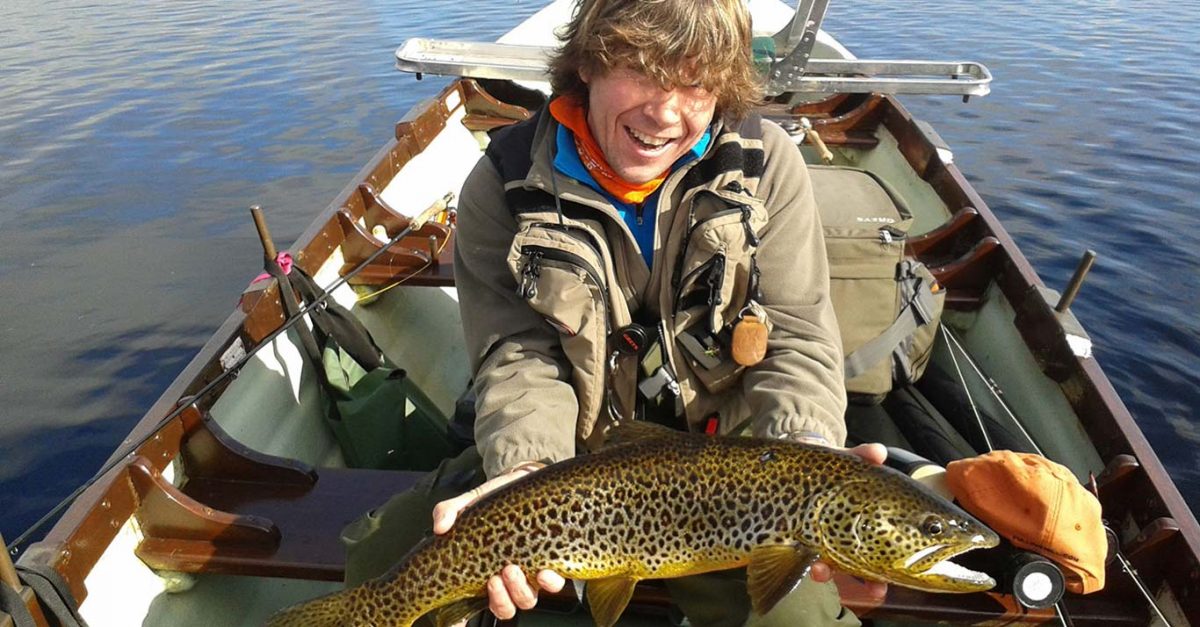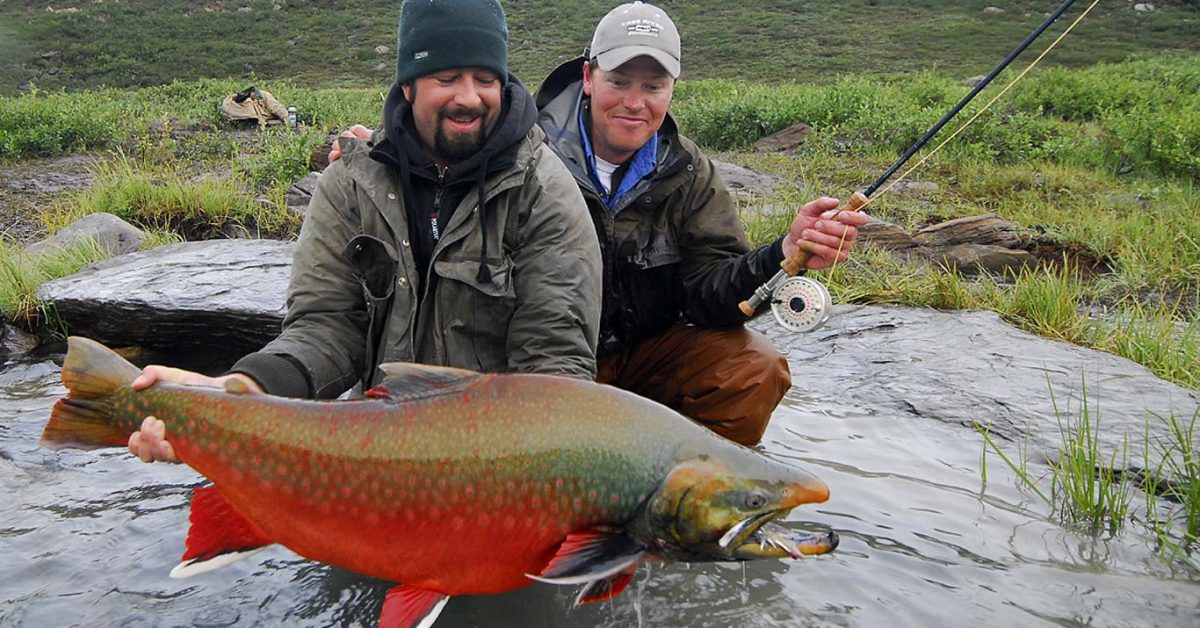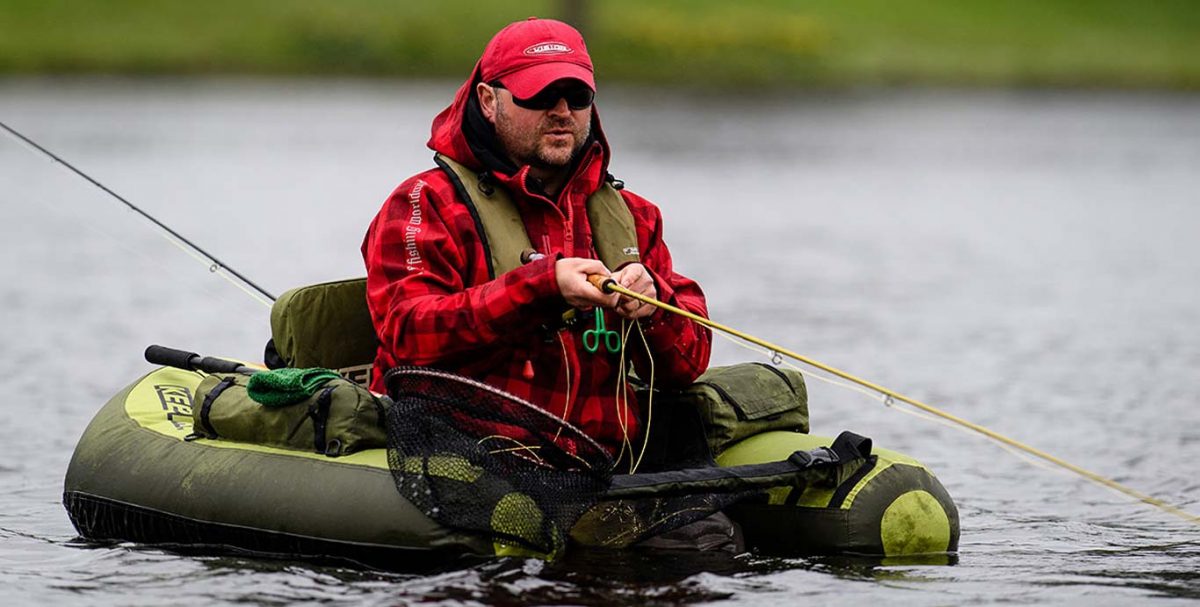Richard Garbett brings you a dry which floats all day and that the trout find hard to resist…the Lite-Brite Hedgehog.
Flies For All Seasons: The Lite-Brite Hedgehog
The Hedgehog, Sedgehog and similar deer hair winged flies have been very popular on both the river and stillwater scene for some time now. They have many great attributes; they are very easy to tie, look an attractive meaty meal to the trout, are very durable and best of all (to me anyway) they’ll float all day with no floatant at all providing you keep them free of fish slime! It’s unusual when I’m fishing dry patterns to keep the same fly on the cast all day (providing the fish are still wanting it) because they either start to refuse to float or get shredded to an unrecognisable few wisps of nothingness. In fact the more the Hedgehog gets ravaged by the trout’s teeth, the better it gets!
My most successful colours so far have been claret, hare’s ear, sooty olive and brown with all these colours being mixed with gold Lite-brite, which I vary the proportions of. Some days the fish seem far more interested in the more heavily laced versions than the less stronger ones. So tie and try a variation of subtleties. Once the Lite-brite has been teased through the wing it really does add to the appeal of the fly. Stick the fly in a glass of water and look at it from underneath as a trout would. They look very tasty indeed. I’m a big believer in flash bringing life to a bit of fur or feather.
Something else I very often add is pheasant tail legs, ever since I saw that the great fly tyer and angler Davie Mcphail put them on one of his Hedgehogs in an online video. I tried it myself, and it certainly didn’t take anything away from the pattern. Legs on flies give me confidence. I tend to put legs on the larger sizes, especially the hare’s ear, it doubles up as a great daddy-long-legs pattern.
If you haven’t yet tried the Hedgehog/ Sedgehog patterns, I’d definitely recommend doing so.
How To Fish…
The Hedgehog is quite a versatile pattern, suitable for static or pulled dry-fly fishing. You can fish it as a single fly, on the point with lightweight flies up the cast as a Washing Line or even as a two or three fly team. The method I’ve had most success with is a size 10 Hedgehog on the point, a size 12-14 Shipman’s Buzzer in the middle position and a size 12 Hedgehog on the top dropper. Cast and leave static for 20-30 seconds and if no interest, twitch them back with pauses. Wild brownies particularly seem to like these pulled back so that they’re bulging in or just under the film as part of a light wet fly cast.
Where To Fish…
Undoubtedly this pattern would take fish on any water, but large open stillwaters are perfect. It’s particularly useful in a choppy wave like many other flies tied with deer hair, such as Muddlers. It will very often provoke a response even when there is little or no surface activity at all. I’ve caught fish on this pattern when I haven’t seen a rise to natural insects all day.
Tying The Fly
| HOOK: | Short shank 8-14 |
| BODY: | Hare’s mask fur, squirrel or seal’s fur mixed with gold or silver Lite-brite |
| WING: | Roe deer hair |
| LEGS: | Knotted cock pheasant tail barbs (optional) |
| HEAD: | As body |

1 Fix your chosen hook into the vice and run a waxed thread to the end of the shank. Only wax the thread in areas where you are making bare wraps. (see tying tips)

2 Make a small ball of dubbing at the rear of hook.

3 Stack a small bunch of deer hair, trim to length and with a pinch and loop, tie down against the ball of dubbing, on top of hook shank.

4 Cover the roots of hair with a slim layer of dubbing.

5 Repeat the process until you have three bunches of deer hair, leaving room for fourth bunch and dubbed head.

6 Use velcro or a dubbing brush to rough up the body at this point, drawing hair upwards into wing. If you want to add legs, add them now after the roughing.

7 Add a fourth bunch of deer hair and build up a head out of dubbing.

8 Avoiding the legs (if added) velcro the head and draw backwards to create a little more buzz and flash. Whip finish and varnish at head to complete.
Tying Tips…
I only add wax to thread when making bare wraps, such as when starting a thread base along shank to start a fly or binding down the wing. I’m a firm believer that this makes a much stronger and longer lasting fly. It’s not necessary for dubbing and in fact can hinder the process, making it much more difficult to move the dubbing. Wetting your forefinger is more than ample if your fingers are a bit dry to start the dubbing process off.
To ensure the wing is tied down on top of shank rather than twisting to one side, use the pinch and loop technique, one of the most useful methods in the fly-tyers armoury.
Seal’s fur, hare’s mask fur or squirrel are all good dubbing materials for this pattern. Seals fur does lend itself to a good floating fly best. The long fibres mix with the wing well, trapping maximum amounts of air.
Ensure you remove all under fur from the deer hair. It will be almost impossible to stack without doing so.


